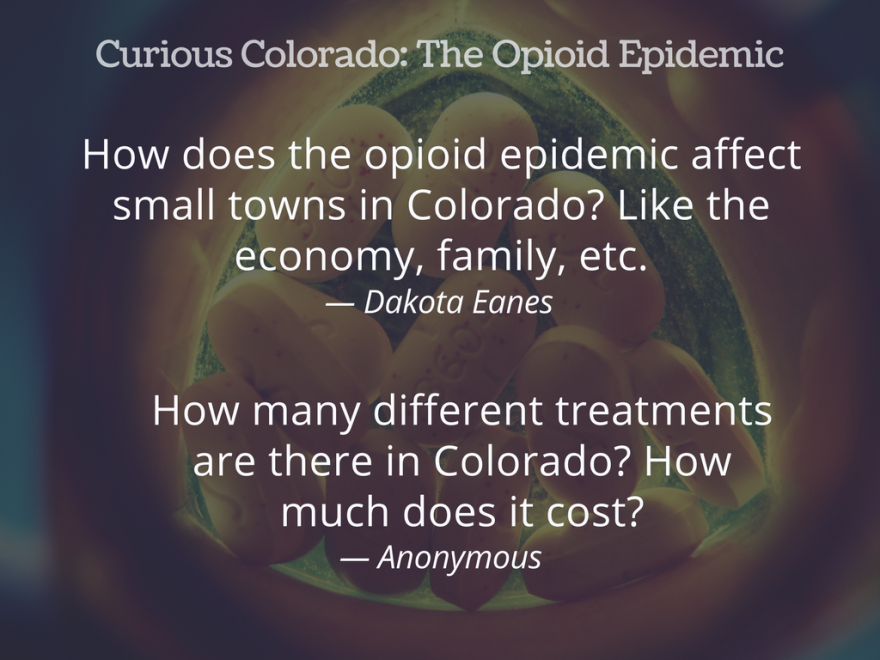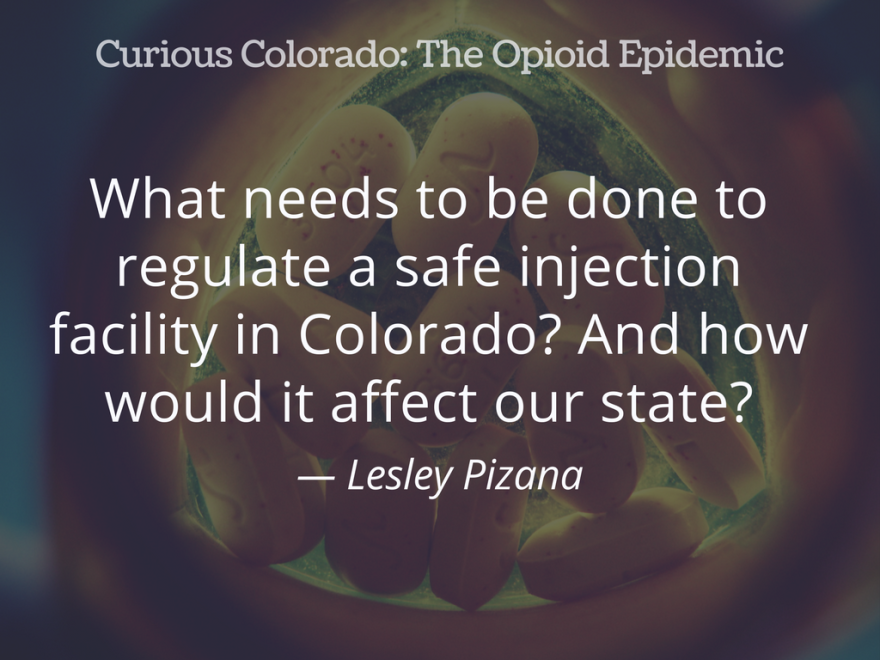Lesley Pizana, 18, sat at a table in the school library at Colorado Mountain College in Leadville. She was eager to find out more about the opioid epidemic.
鈥淢y topic is focusing on the different type of treatments of heroin, opiate addiction,鈥� said Pizana.
Pizana is one of seven students in a college composition and reading intro course at CMC. The students chose opioid addiction as the class theme. For their final project, they had to identify an aspect of the epidemic and write a paper proposing solutions to that issue.
Since KUNC has reported on steps the state is planning to take to address opioid overdoses and addiction, they sent us their questions via our website.

Several students were curious about treatment options for heroin and prescription pain pill addictions.
State lawmakers are planning to pursue that that topic 鈥� among others -- during next year鈥檚 legislative session. One bill proposes more funding and training so health care providers can prescribe , or MAT.
MAT combines therapy, social services and medications to treat opioid addiction. There are three types of medication: naltrexone, methadone and buprenorphine. Naltrexone blocks the opioid receptors, so a person can鈥檛 get high, while methadone and buprenorphine are long-action opioids that reduce cravings and withdrawal symptoms.
Experts have said it鈥檚 the gold-standard of treatment.
鈥淭he mortality rate due to overdose for treatment approaches that only use counseling without MAT is double, compared to when counseling is combined with one of these medications,鈥� said Marc Condojani, director of Adult Treatment and Recovery at the Colorado Office of Behavioral Health. 鈥淪o that鈥檚 really where that gold standard comes in when dealing with opioids.鈥�
has 23 methadone clinics and almost 400 health care providers that can prescribe buprenorphine across the state.

Another bill on the table for the 2018 session involves piloting a supervised injection facility, or SIF, in Denver. It would be a space for users of heroin and other injectable drugs to get high safely. The facility would provide clean needles as well as access to health care and treatment referrals.
There are about 100 supervised injection facilities in nine countries around the world and no one has ever died in one. Albus Brooks, Denver City Council president, said a SIF could reduce opioid overdoses.
鈥淭hese are proven results. We know they work and right now we鈥檙e not doing enough in our city, of substance, to begin to curb those numbers,鈥� said Brooks. 鈥淚 believe this is one strategy of many that could help.鈥�
But supervised injection facilities are controversial. There are none in the U.S., though sites have been proposed in cities across the country. The only place to find one in North America is Canada.
The debate over SIFs made it into the classroom. Tyler Harvey, 18, has been researching the topic and is a fan.
鈥淵ou can tell someone to stop using drugs if they鈥檙e addicted to heroin or meth or something like that,鈥� said Harvey. 鈥淏ut at the end of the day, you鈥檙e really not gonna come away from your addiction that fast. So why not just give them a safe place to do it.鈥�
On the other hand, 15-year-old Dakota Eanes said SIFs sounded like a bad idea.
鈥淚 feel like SIFs should not be here because I feel it is encouraging them to do heroin,鈥� said Eanes. 鈥淚 just don鈥檛 like the idea of having them.鈥�

The students didn鈥檛 know much about the opioid epidemic before the semester started. But after researching pain pill and heroin addiction for three months, they formed their own opinions.
鈥淲hat I already knew about it was that it was a problem and I didn鈥檛 know that it was as wide-spread as it is,鈥� said Michael Burton, 20. 鈥淚鈥檇 like to learn further about that and see what we can do to help.鈥�






